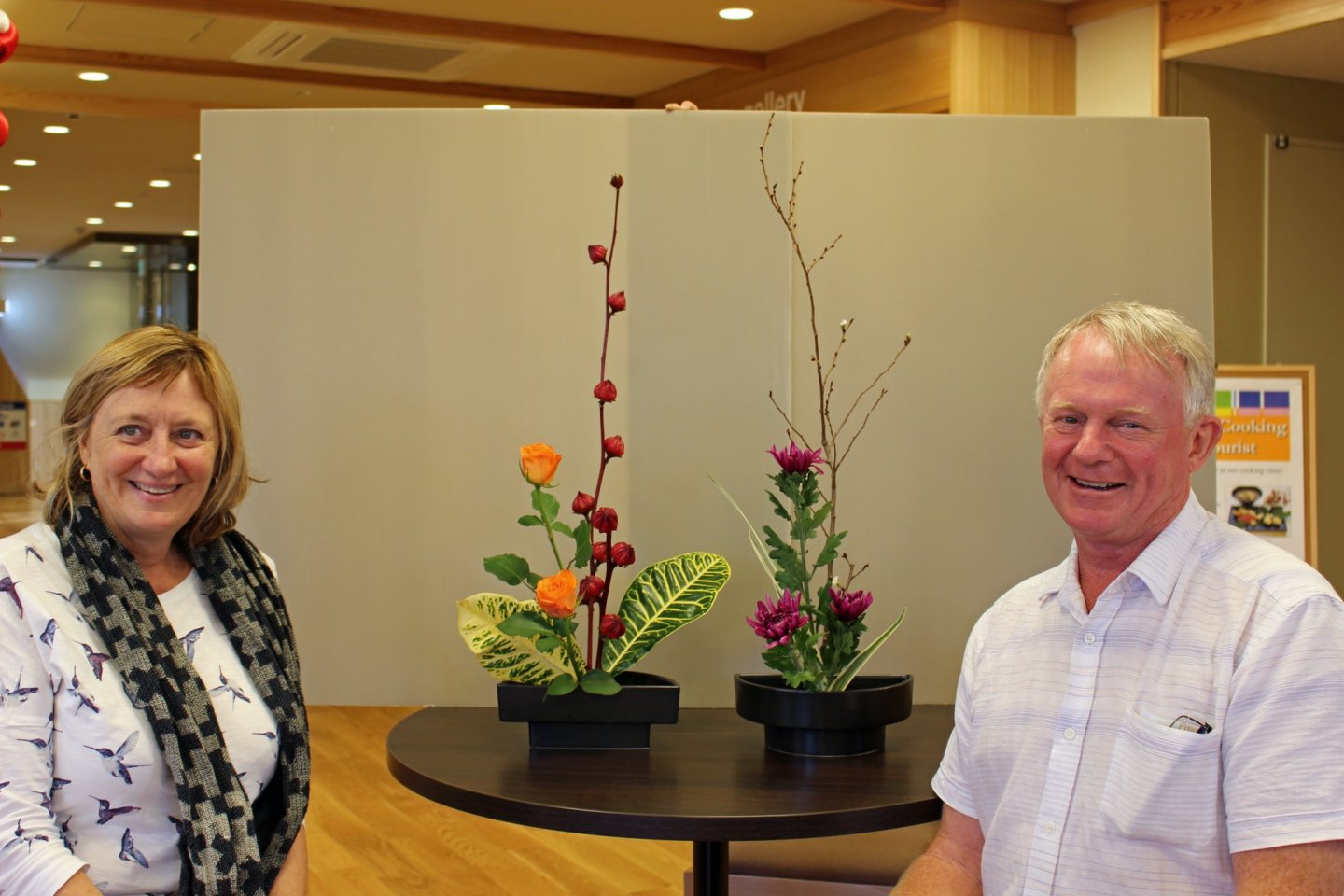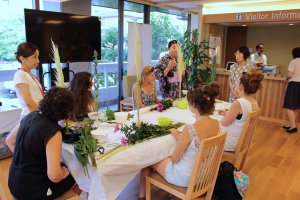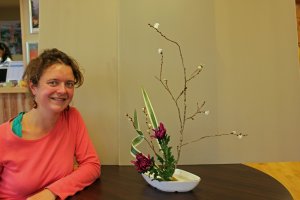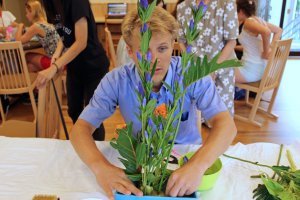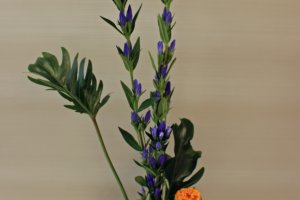“This is beautiful, but this one leaf seems a bit lonely,” observed the ikebana (flower arranging) instructor. She took another leaf, placed it in the student’s arrangement, took it out, trimmed it and placed it again. “There now, that’s perfect.”
“You’re right, that is more balanced,” agreed the student.
The NARA Visitor Center & Inn
Since July 23rd of the this year, 2015, the NARA Visitor Center & Inn has been travelers’ one stop shop for all travel information and resources in Nara City. Two walls of travel information (one for Nara and the other for elsewhere in Japan), knowledgeable multi-lingual staff on hand every day, and free internet in the form of password free WiFi, 3 laptops and several tablets in the Travelers’ Lounge, and a convenience store in the basement make the Visitor Center the perfect place to relax, refuel and plan one’s next move. An ATM accepting overseas cards, free luggage storage and currency exchange services are also available. The Visitor Center’s party piece, however, is the cultural experiences it offers free of charge every day. New activities rotate into the schedule each month and with the changing seasons, but some events have become a staple of the NARA Visitor Center’s schedule. The Ikebana Flower Arranging Experience, offered every Wednesday from 2pm-4pm, is one of the most popular events.
Ikebana
The appreciation and worship of nature has been around since ancient times. People in Japan did and still do bring flowers, grass, bamboo and branches from trees into their homes both to admire nature from indoors and to observe the change and beauty of the seasons, and to invite the blessings of gods into their home. The beginnings of what has become ikebana today started in the Muromachi period (1392-1573) with a practice called tatebana. Simple arrangements of flowers and other plants were used to decorate the Imperial Palaces and estates of high ranking samurai. Lacking a standard form at first, tatebana arrangements changed from a simple line or row of elements to an arrangement of lines formed by the elements that started from a single point at the base and spread as they went up. In the Edo period the practice of flower arranging spread to the general public using tatebana as a guide. In 1895 the first ikebana school opened and a set of rules codified.
A traditional ikebana arrangement should have two main elements: the shushi (main or father element) and the kyakushi (guest of mother element). The number of elements that come after the shushi and the kyakushi are up to the person constructing the arrangement, but the shushi must be the longest/tallest element and the kyakushi must be the second longest/tallest. All the elements should be arranged to best show off their beauty and to direct a viewer’s attention toward a central point. They should also create depth.
After selecting my elements (leafy stalks with purple flowers, a rhododendron-like orange flower and some large leaves with a long stem), the instructor showed me how to size each element appropriately and instructed me to hold each stem under water and clip off the bottom centimeter at a 45 degree angle (this apparently helps keep the plants alive and healthy). I was surprised that my expectations didn’t produce the effect I thought they would and I ended up changing my kyakushi and many of the supporting elements and their placement. The instructor was always there to consult with and had useful ideas and the most important piece of advice, “That you are enjoying the process and the work you create is the most important point.”
Getting There
The NARA Visitor Center & Inn is on the south bank of the Sarusawa Pond. From Kintetsu Nara Station walk through the covered Higashi-muki shopping street to the Sanjo-dori, turn left and walk to the Sarusawa Pond. The Visitor Center is on the far side. The walk should take about 10 minutes.
From JR Nara Station go out East Exit, walk between the bus platforms and the brick Municipal Tourist Information Center to the corner stoplight. Cross the main street and walk straight up the Sanjo-dori until coming to the Sarusawa Pond. The walk should take 20-25 minutes.
